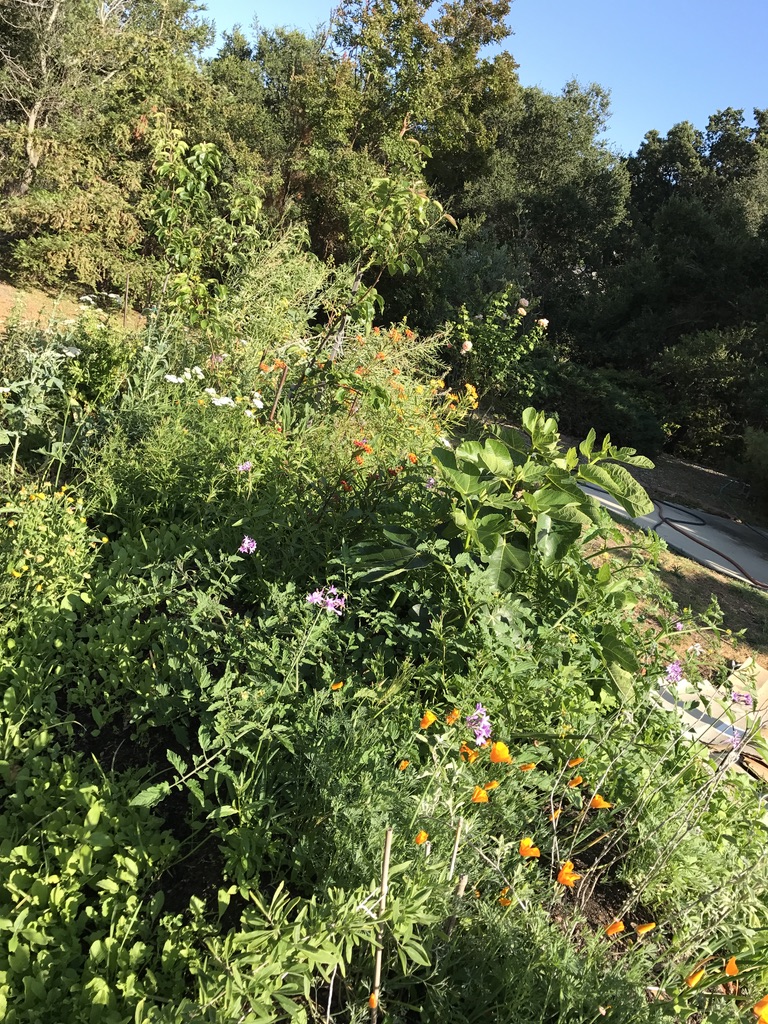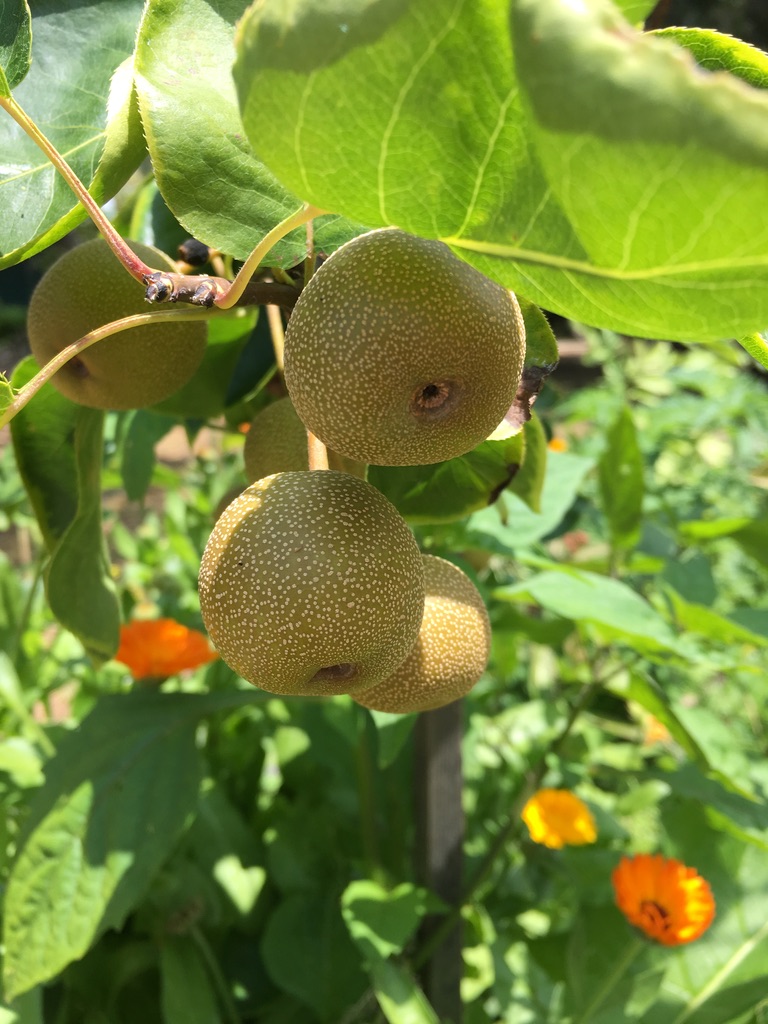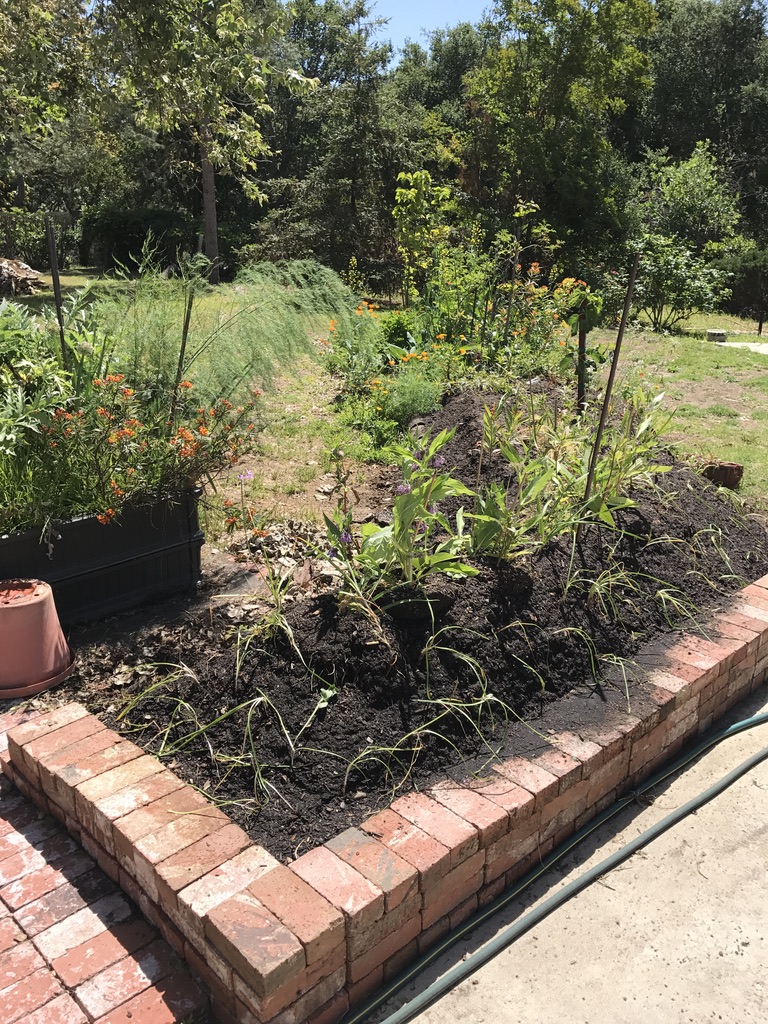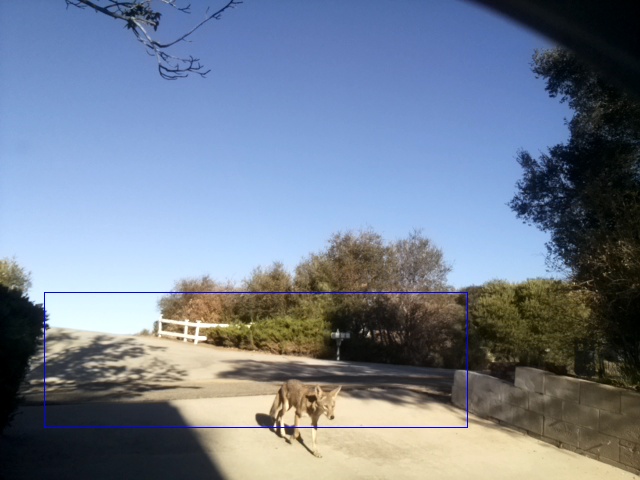Yin Yang Ranch
Urban Wildlife, Native Plants and Software
Yin Yang Ranch is a suburban 2 acre lot that we are gradually transforming into an urban wildlife and native trees sanctuary. We are in Southern California about 10 miles from the Malibu coast. It is a dry Mediterranean climate with no freezing days. Drought and limited rainfall are the toughest climate issues.
Converting the Lawn into Living Soil and Native Plants
We have replaced our suburban lawn with Hugelkultur raised beds built with logs and living soil. We are making living soil by composting garden trimmings, food scraps and coffee grounds from local coffee shops. We are growing a wide variety of plants that feed birds, bees, butterflies and people. We are harvesting rainwater in barrels, swales and terraces. We are creating a small permaculture farm in suburbia. Which means we are also creating a habitat for wildlife including coyotes, bobcats, hawks, raccoons, ravens, quail, rattlesnakes, lizards, moles, voles and worms...

Building a Permaculture Native Forest
"Remember how self-reliant a natural landscape is. An ecosystem provides for itself. No one brings in truckloads of fertilizer to a forest; no one carries its waste to the dump. The forest takes care of all that internally, producing fertility and recycling litter and debris. In other words, the forest’s inputs and outputs are balanced, leaving little waste, and the work is powered by sunlight. This is the model we strive to emulate." (from Gaia's Garden by Toby Hemenway)

Building Living Soil
To build a forest, we first have to build living soil to replace our urban lawn. We can start by making compost from food scraps, coffee grounds and leaves. Why? Plants combine sunlight, water and carbon dioxide to make sugars. They send many of these sugars down through their roots to feed beneficial microorganisms including bacteria, fungi, protozoa and nematodes. The plants are trading sugars ("cakes and cookies" per Elaine Ingham) for dense and highly available nutrients provided by the living soil food web. An old growth forest takes many years to create deep living soil, but we can accelerate the process by composting.
Ongoing Transformation Includes ...
Getting rid of the lawn. Covering the roof in solar panels. Setting up rain barrels around the house and barn. Making compost bins and filling them with coffee grounds and food scraps from local coffee shops and restaurants. Using compost to build hugelkultur raised beds. Planting a diverse food forest of trees, flowers and vegetables.

Tracking Wildlife and Water with Software
We are developing open source software and hardware. How many gallons did it take to water the fig trees today? (we have a Raspberry Pi server watching the water meter with a camera). When did the coyotes last run behind the barn? (we have a camera there). What is the temperature and soil moisture under the avocado trees? What is the temperature and moisture content of the 3 compost piles? How much solar electricity did we generate today? How full are the rain barrels? Sensors, small computers and software can help us learn what works and keep track of our wildlife, plants and weather.

Videos and Photos of Yin Yang Ranch
- Photos of Yin Yang Ranch (link goes to Yin Yang Ranch photos on Flickr)
- Yin Yang Ranch YouTube Channel (link goes to YouTube)